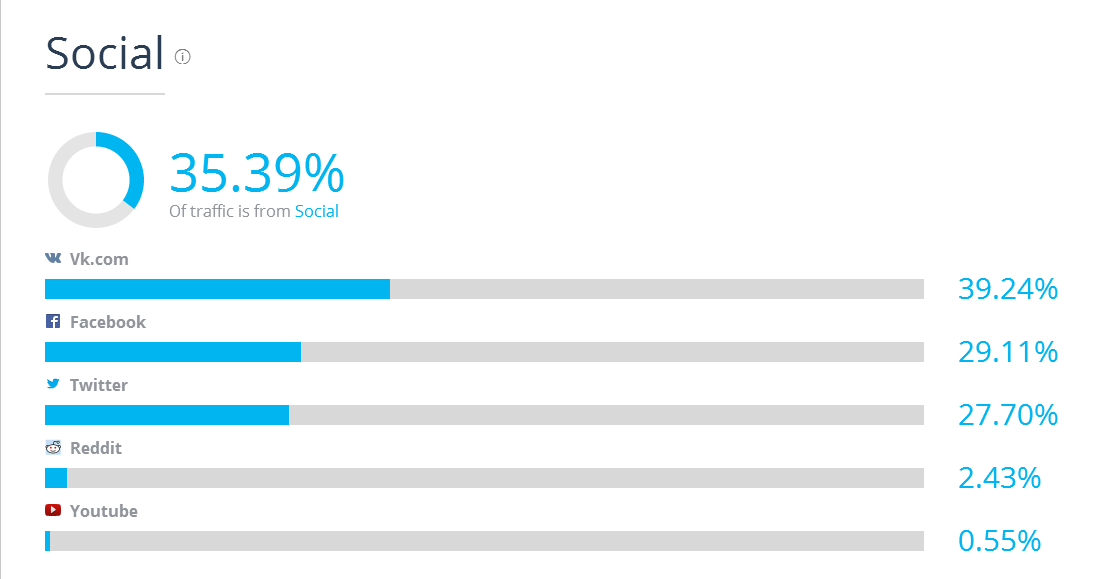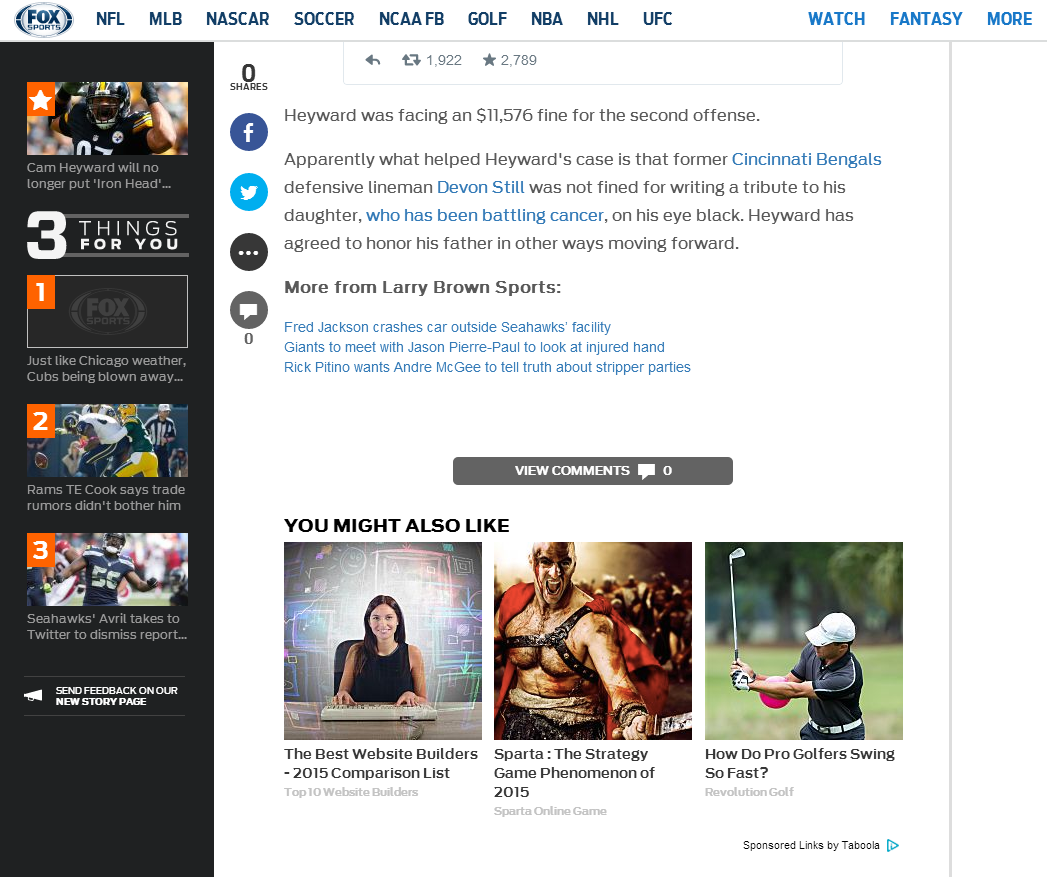How media is changing to engage audiences

Media is what is around the article. You are not a beautiful site with a main page. You are the frame around the content. And it depends on her whether the reader remains on the site or leaves.
What is the problem?
Media produces content and wants to be read. We receive articles in the form of links in social networks, through exchange networks, by mail, in instant messengers, through search. Users almost do not go directly to the site.
I'm sorry, what? Do you bookmark Vedomosti daily? My friend, you are an esthete.
Now the main distributors of media content are social networks. According to Shareaholic , social networks bring 31% of all traffic to sites on the Internet. Just a year ago, this figure was 23%. The world leader unconditionally is Facebook.
52% of all Buzzfeed traffic comes from social networks. The main source is Facebook. Russian media from social networks attract 30-40% of all traffic, it leads in the list of “donors” more often on VKontakte, sometimes losing to Facebook.

Distribution of traffic from the Medusa social networks according to Similarweb version
In this situation, the media should catch the user, bring them to themselves, process and get a loyal user. The maximum program is a regular reader.
School of effective text "Media" conditionally sharesall site visitors to "traffic" and the audience. The audience is loyal and regular readers. Traffic is a fluid concept. The stronger and more provocative the announcement, the more traffic.
There are special types of content and feed for fishing: seals, naked female breasts, lists, tests, loud headlines. Such content Michael Stelzner (author of the book "Content Marketing: New Methods of Attracting Customers in the Internet Age") called "nuclear." Fuel is good, but unpredictable. Whether or not to fire depends on many factors. And good media should know in advance which article will take off and generate traffic, and which not.
This is what Buzzfeed is doing (sorry we are so original). The publication learned to mathematically predict the success of the materialin social networks. To do this, there is a special department that is closely involved in Big Data. Specialists study published materials, delve into the API of social networks and make accurate predictions about what you need to write about and how to do it right. It is thanks to the work of this department on Buzzfeed that tests appear that collect tens of millions of views.
We strained gyrus, but did not remember in Russia a single editorial office that would seriously engage in something like that. It is customary for us to find out that the material has been shot, after the fact.
Everyone is acting for sure. Therefore, cats are so popular. Rather, the “seals” are the same nuclear content according to Stelzner.
The price of “cats” is high, because they pave their way from anywhere to your site with their fluffy paws. Alas, not a single brilliant investigation or interview will achieve the same effect.
“Cats” is not only a selection of “12 most striped favorites that will make you cry from tenderness” and other victims of click kiting. "Rules of Life" are Esquire kittens. Seals are very viral content that attracts users well.
As a result, we get two audiences that suit two types of content:
- Traffic and "seals"
- Loyal readers and serious topics
How does changing the entry point to the site change the concept of media?
The entry point to the site is a specific article. In fact, it ruins the rubric of the classic media. Now no one cares about in which section the article is published and how it is submitted on the main page.
Bob Cohn
President and COO, The Atlantic The
home page is a good way to reflect the value of the publication. Design, selection of topics, interactive features, language, intonation, refresh rate, even advertising - all this tells who you are. Having looked at the site for 10 seconds, the visitor can understand everything about you: what the site is about, in what language and in what tone it speaks, what topics it touches on.
The main page has rather marketing significance, this is a statement of the brand of the publication about itself. But she cannot help with traffic. The main page and the heading in this regard are greatly overestimated by many editors. 9 out of 10 sessions of TheAtlantic.com and our other projects begin on the page of the article.

This is the main page of The Atlantic. The
focus of all media is shifting. Now your media is what is around the article. You are not a beautiful site with a main page. You are the frame around the content. And it depends on her whether the reader remains on the site or leaves. The man will leave when he reads the text. Unless you notice something that makes him stay.
How and from what should the article binding be formed?
Take Fox Sports as an example. In just six weeks, the media increased the number of page views by 23% and by 37% the average time on the site. What did they do?
- "Infinite" scroll. When scrolling through the page, the reader sees a recommendation from three similar stories,
- personalized block of recommendations, compiled on the basis of behavior on the site,
- fixed block of social buttons to comment on articles and share them was easier.

Sports Illustrated in 2014 made a redesign of the site:
- Increased headlines
- under the article and in the left column are recommendation blocks,
- significantly increased the blocks of buttons of social networks.

In the summer of 2015, the redesign was carried out by ESPN, an American sports publication and television channel, one of the largest sites in the world. In the first three months after the restart, ESPN increased the number of unique users by 16% compared to last year. Compared to two months before the restart, the number of visits increased by 31%. The main change is personalization of information and simplified navigation. The entire left column was given for recommendations, and the sharing buttons on social networks are constantly located near the text.
In the "My headlines" section, users customize the feed directly for themselves and receive news only on interesting topics. The size of the video covers was increased to the maximum.

What to do media?
- Emphasis on personalization of content. Show users articles based on their behavior.
- Work with social networks. You post on social networks and make sure that articles are shared.
- The main page is the face of the brand, and does not need wide functionality. Make it easier.
- Simplify the design. No one needs a detailed heading.
- Endless scrolling also helps. True, we know from tests on Surfingbird that just a long scroll works better than an endless one.
We at Relap create media advisory blocks and help engage users. If you want visitors to stay on the site longer, find more interesting materials and view more pages - write to us at support@relap.io

